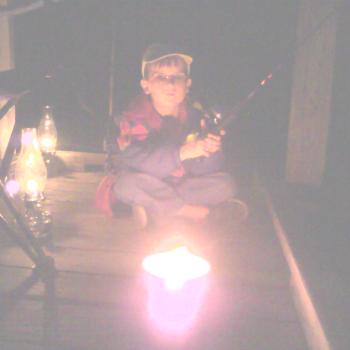Is there any hope of peace when the other person is just so wrong?

Frienemies
My older brother and I grew up as best friends and worst enemies at the same time. With not even two years between us, I always felt like I was riding his coattails. He must have been aggravated by his little brother trailing after him. He made me feel like everything I did was wrong unless I did it like him. So, when mutual annoyance got the better of us, I would pick on him until he hit me—then I would tell on him for hitting me. A half-century into our relationship, we still don’t agree completely on everything.
When we both went into ministry, this accentuated the similarities we share, but it also highlighted the differences. He defected from the denomination of our childhood, the Southern Baptist Convention. The United Church of Christ was a better fit for him. I remained a Baptist for a quarter century, following the adage, “Dance with the one who brung ya.” His worship style is liturgical; mine is casual and contemporary. For most of our adulthood, he was the liberal and I was the conservative. He really wished I would see the light.
Our differences went beyond church experience and theology. My brother was the city mouse, and I was the country mouse. He had one child; I had four. He moved to the north while I remained in the south. He voted Democrat, while I used to cast a Republican ballot. I really wished he would figure out the truth.
Is Peace Possible?
Having a good relationship with someone with whom you fundamentally disagree can be a challenge. Those disagreeing people in your life might make for difficult holidays get-togethers. Or frustrating church committee meetings. Or tough work partners. You don’t see things eye to eye, and you make your differences no secret to others around you. You may wonder how they can even be a good person, since they don’t seem to share your values. But don’t give up—you can be at peace with each other. Here are eight steps:
Eight Steps to Peace
- Love them for who they are. Find the beauty in that person and appreciate those things. If you’re constantly finding fault, you’ll never see the good. Philippians 4.8 NRSV says, “Finally, beloved, whatever is true, whatever is honorable, whatever is just, whatever is pure, whatever is pleasing, whatever is commendable, if there is any excellence and if there is anything worthy of praise, think about these things.” Let these be the things you focus on when you think of that person. Find the good in them, and you will begin to love them for who they are.
- Don’t love them for their potential. Once, a friend’s wife told me, “I didn’t marry him for who he was. I married him for who I knew he could be.” This is a sure way to breed trouble. The Big Book of Alcoholics Anonymous says, “Expectations are Premeditated Resentments.” If you love someone for what you expect from them, you’ve decided to be disappointed if they don’t measure up. Instead of this, see suggestion # 1.
- Let them be wrong. It isn’t necessary for you to correct a person all the time. It’s okay for them to see things differently from you. You don’t always have to be right. Dr. Wayne Dyer said, “If your choice is between being fair or being kind, choose kind. We all struggle with the insecurity of our egos, the insecurity that we are wrong. And a threatened ego will almost always strike.” If you can, let them be wrong. Because being kind is always right.
- Of course, if their viewpoint brings harm to others, there is a time, place, and way to speak your truth without putting them on the defensive. This is where “speaking the truth in love” comes in. Matthew 18:15-18 says that if it’s absolutely necessary to correct someone, don’t do it publicly. If confrontation must happen, do it in the context of love and respect, one on one, or in the smallest group possible. And if resolution is impossible, continue to love that person, even if that means at a distance.
- It’s okay if some topics are off-limits. When my brother and I disagreed on more things than we do now, we understood that certain things are better left unsaid. It’s not helpful to bring up difficult subjects all the time. Sometimes it’s best to just be brothers. This means…
- Focus on where you agree. Often two people feel that they disagree on something fundamental, when they actually agree on the principle but disagree on approach. For example, if my brother and I disagree on how to worship, we agree that we should worship a loving God. Or if we disagree on what makes for a really good kayak (yes, this is a real debate between Paul and myself), we agree that, “there is nothing–absolutely nothing–half so much worth doing as simply messing about in boats (Rat, from Wind in the Willows, by Kenneth Grahame).”
- Pray for them, not about them. Instead of asking God to change them, ask God to bless them. It completely shifts your perspective from competition to collaboration. Find out what struggles the person is having and pray for those things. Better yet—ask God how you can be the solution to those struggles.
- Consider that maybe—just maybe—they are right. These days, my brother and I agree on many of the issues where we used to disagree. It’s not because I won him over. It’s because he followed steps 1-7. Eventually, without his harping on every subject where we disagreed, I came to appreciate his perspective. And the Spirit of God showed me where I was wrong.
When we believe our siblings to be wrong, the first thing we usually do is tell them so. Social media erupts in arguments that end in folks unfriending those they love the most. Yes, there are topics where we must take a stand—like I just told my dad I had to disagree with his position on critical race theory and reparations in the US South. But this must be done with love and respect, in the right time and the right way. But when we follow the steps to peace, we often get it. And along with it—if we’re lucky—we may even convince them about the correct kind of kayak.












